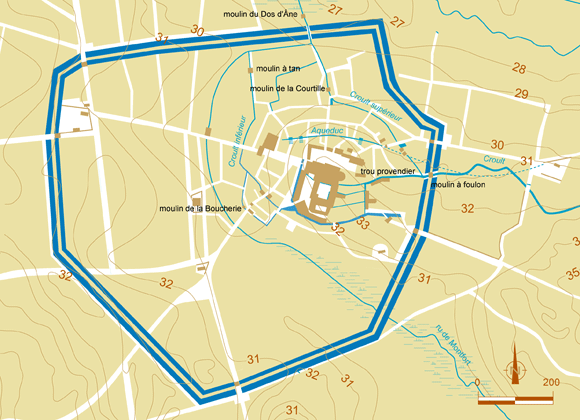- Home
- Crafts and daily life
- The Croult and river-based trades
The rivers of Saint-Denis.
© UASD / Th. Sagory, M. Wyss
During the Carolingian period, the waters of the Rouillon river were partially diverted. In 832, we find the first mention of this river-the Croult (Crodoaldus flumen) - in the charter establishing the monastery's estate which also states that it should be cleaned once a year. The name Croult may come from a German patronymic Crodoald, perhaps the name of the person who organized the diversion.
Marote miraculously saved from drowning in the Croult, after "Le livre des faiz monseigneur Saint Loys", 15th century.
© BNF (ms fr 2829, fo 98v)
Archaeological research has been carried out on several sections of this urban stream. Starting in the eleventh century, the river was contained with wattle palisades, and its banks were reinforced with stone in the course of the thirteenth century. The silt deposited in the riverbed formed a sandy layer with complex stratification, characteristic of fast-flowing water. The multitude of thin stakes implanted the length of the Croult's banks may be related to the wooden planks and passageways whichfullers and weavers set up along the river.

